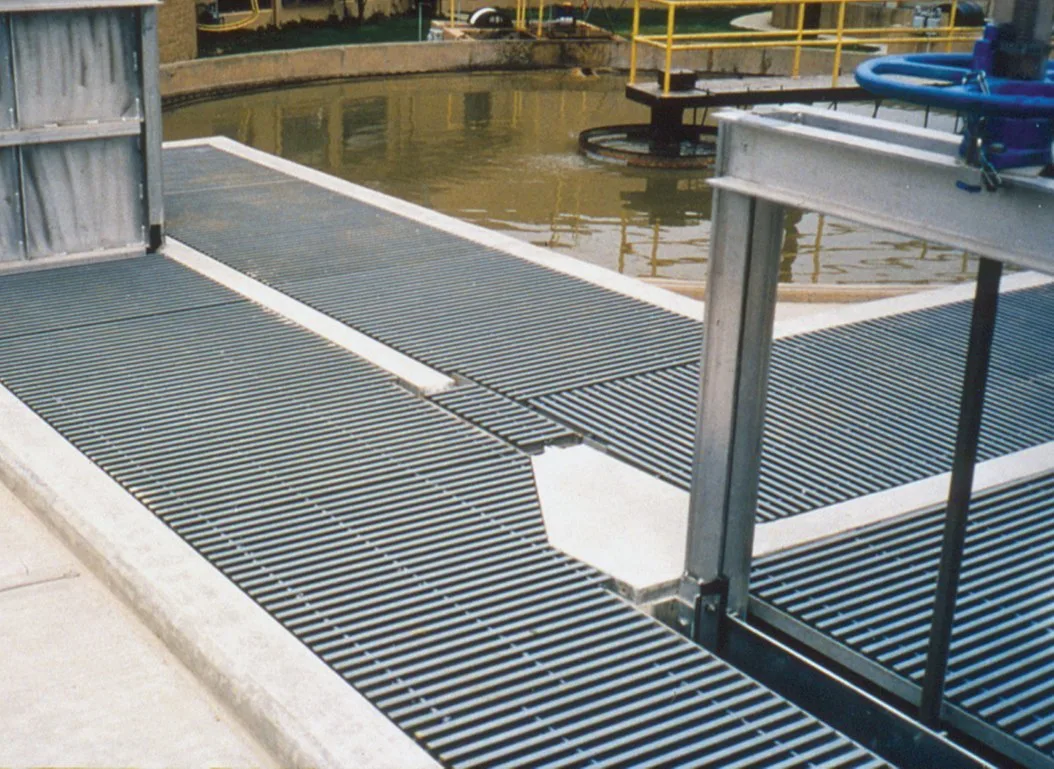When it comes to choosing the right materials for your construction or industrial projects, fiberglass grating is an excellent option. Known for its durability, strength, and versatility, fiberglass grating is widely used in various applications. Here’s a detailed look at the specifications you should consider.

fiberglass grating specification
What is Fiberglass Grating?
Fiberglass grating is a type of industrial flooring made from fiberglass-reinforced plastic (FRP). It is designed to withstand harsh environments, offering high strength, low maintenance, and resistance to corrosion. Unlike traditional materials like steel or aluminum, fiberglass grating is non-conductive and has excellent anti-slip properties.
Key Specifications of Fiberglass Grating
- Material Composition:
- Resin Types: The performance of fiberglass grating heavily depends on the type of resin used. Common resins include:
- Isophthalic Polyester: Suitable for general use, offering good chemical resistance.
- Vinyl Ester: Provides superior chemical resistance, ideal for harsh environments.
- Orthophthalic Polyester: Cost-effective and suitable for light to moderate environments.
- Resin Types: The performance of fiberglass grating heavily depends on the type of resin used. Common resins include:
- Grating Types:
- Molded Grating: Offers excellent bi-directional strength and is ideal for applications requiring high durability.
- Pultruded Grating: Known for its high load-bearing capacity and is best for areas with heavy foot or vehicular traffic.
- Load Capacity:
- Standard Load: Most gratings can withstand a standard load of 500 pounds per square foot. However, custom specifications can be made for higher load requirements.
- Deflection: The allowable deflection typically is 0.25 inches at maximum load.
- Panel Sizes:
- Standard panel sizes include 3’x10’, 4’x8’, and 4’x12’. Custom sizes can be manufactured based on project requirements.
- Thickness: Common thicknesses range from 1 inch to 2 inches, depending on the application’s load requirements.
- Mesh Patterns:
- Standard Mesh: 1.5” x 1.5” or 2” x 2” openings are typical for general applications.
- Mini Mesh: Smaller openings like 1” x 1” or 0.5” x 0.5” for pedestrian areas where small objects might drop through.
- Surface Options:
- Gritted Surface: Provides excellent slip resistance and is suitable for oily or wet environments.
- Concave Surface: Offers moderate slip resistance and is easier to clean.
- Color Options:
- Standard colors include yellow, gray, green, and black. Custom colors can be provided to match specific aesthetic or safety requirements.
- Fire Resistance:
- Many fiberglass grating products meet ASTM E-84 Class 1 flame spread rating, making them suitable for use in areas with strict fire safety regulations.
Advantages of Fiberglass Grating
- Corrosion Resistance: Perfect for chemical plants, wastewater treatment facilities, and coastal installations.
- High Strength-to-Weight Ratio: Easier to handle and install compared to metal grating.
- Non-Conductive: Safe for electrical installations and environments where electrical hazards are a concern.
- Low Maintenance: Resistant to rust, rot, and insect damage, reducing long-term maintenance costs.
- Versatility: Can be used in a wide range of environments and customized to meet specific project needs.
Conclusion
Fiberglass grating is a versatile, durable, and cost-effective solution for many industrial and construction applications. By understanding the key specifications, such as material composition, load capacity, panel sizes, and surface options, you can select the right grating for your project’s needs. Whether you need it for a chemical plant, a pedestrian walkway, or a marine environment, fiberglass grating offers the performance and reliability you require.




























